Deep Learning Architecture for Collaborative Filtering Recommender Systems
Abstract
1. Introduction
2. Materials and Methods
3. Results
3.1. Prediction Results
3.2. Recommendation Results
4. Discussion
Author Contributions
Funding
Conflicts of Interest
References
- Dong, X.; Yu, L.; Wu, Z.; Sun, Y.; Yuan, L.; Zhang, F. A Hybrid Collaborative Filtering Model with Deep Structure for Recommender Systems. In Proceedings of the Thirty-First AAAI Conference on Artificial Intelligence, San Francisco, CA, USA, 4–9 February 2017; pp. 1309–1315. Available online: https://aaai.org/ocs/index.php/AAAI/AAAI17/paper/view/14676 (accessed on 12 February 2017).
- Pazzani, M. A Framework for Collaborative, Content-Based and Demographic Filtering. Artif. Intell. Rev. 1999, 13, 393–408. [Google Scholar] [CrossRef]
- Ebesu, T.; Fang, Y. Neural Citation Network for Context-Aware Citation Recommendation. In Proceedings of the 40th International ACM SIGIR Conference on Research and Development in Information Retrieval, Tokyo, Japan, 7–11 August 2017; pp. 1093–1096. [Google Scholar] [CrossRef]
- Musto, C.; Greco, C.; Suglia, A.; Semeraro, G. Askme Any Rating: A Content-Based Recommender System Based on Recurrent Neural Networks. In Proceedings of the IIR, Venezia, Italy, 7–10 May 2016. [Google Scholar]
- Wang, X.; He, X.; Nie, L.; Chua, T.-S. Item Silk Road. In Proceedings of the 40th International ACM SIGIR Conference on Research and Development in Information Retrieval, Tokyo, Japan, 7–11 August 2017; pp. 185–194. [Google Scholar] [CrossRef]
- Yang, C.; Bai, L.; Zhang, C.; Yuan, Q.; Han, J. Bridging Collaborative Filtering and Semi-Supervised Learning. In Proceedings of the 23rd ACM SIGKDD International Conference on Knowledge Discovery and Data Mining, Halifax, NS, Canada, 20–24 August 2017; pp. 1245–1254. [Google Scholar] [CrossRef]
- Yi, B.; Shen, X.; Zhang, Z.; Shu, J.; Liu, H. Expanded Autoencoder Recommendation Framework and Its Application in Movie Recommendation. In Proceedings of the 2016 10th International Conference on Software, Knowledge, Information Management & Applications (SKIMA), Chengdu, China, 15–17 December 2016; pp. 298–303. [Google Scholar] [CrossRef]
- Chu, W.-T.; Tsai, Y.-L. A hybrid recommendation system considering visual information for predicting favorite restaurants. World Wide Web 2017, 20, 1313–1331. [Google Scholar] [CrossRef]
- He, R.; McAuley, J. Ups and Downs. In Proceedings of the 25th International Conference on World Wide Web, Montreal, QC, Canada, 11–15 April 2016; pp. 507–517. [Google Scholar] [CrossRef]
- Hsieh, C.-K.; Yang, L.; Wei, H.; Naaman, M.; Estrin, D. Immersive Recommendation. In Proceedings of the 25th International Conference on World Wide Web, Montreal, QC, Canada, 11–15 April 2016; pp. 51–62. [Google Scholar] [CrossRef]
- Li, K.; Zhou, X.; Lin, F.; Zeng, W.; Alterovitz, G. Deep Probabilistic Matrix Factorization Framework for Online Collaborative Filtering. IEEE Access 2019, 7, 56117–56128. [Google Scholar] [CrossRef]
- Zhang, S.; Yao, L.; Sun, A.; Tay, Y. Deep Learning Based Recommender System. ACM Comput. Surv. 2019, 52, 1–38. [Google Scholar] [CrossRef]
- Mu, R.; Zeng, X.; Han, L. A Survey of Recommender Systems Based on Deep Learning. IEEE Access 2018, 6, 69009–69022. [Google Scholar] [CrossRef]
- Wang, X.; Yu, L.; Ren, K.; Tao, G.; Zhang, W.; Yu, Y.; Wang, J. Dynamic Attention Deep Model for Article Recommendation by Learning Human Editors’ Demonstration. In Proceedings of the 23rd ACM SIGKDD International Conference on Knowledge Discovery and Data Mining, Halifax, NS, Canada, 20–24 August 2017; pp. 2051–2059. [Google Scholar] [CrossRef]
- Liang, D.; Zhan, M.; Ellis, D.P. Content Aware Collaborative Music Recommendation Using Pre-Trained Neural Networks. In Proceedings of the 16th International Society for Music Information Retrieval Conference, ISMIR, Málaga, Spain, 26–30 October 2015; pp. 295–301. [Google Scholar] [CrossRef]
- Wang, X.; Wang, Y. Improving Content-Based and Hybrid Music Recommendation Using Deep Learning. In Proceedings of the 22nd ACM International Conference on Multimedia, Orlando, FL, USA, 3–7 November 2014; pp. 627–636. [Google Scholar] [CrossRef]
- Chen, J.; Zhang, H.; He, X.; Nie, L.; Liu, W.; Chua, T.-S. Attentive Collaborative Filtering. In Proceedings of the 40th International ACM SIGIR Conference on Research and Development in Information Retrieval, Tokyo, Japan, 7–11 August 2017; pp. 335–344. [Google Scholar] [CrossRef]
- Chen, X.; Zhang, Y.; Ai, Q.; Xu, H.; Yan, J.; Qin, Z. Personalized Key Frame Recommendation. In Proceedings of the 40th International ACM SIGIR Conference on Research and Development in Information Retrieval, Tokyo, Japan, 7–11 August 2017; pp. 315–324. [Google Scholar] [CrossRef]
- Tang, J.; Wang, K. Personalized Top-N Sequential Recommendation via Convolutional Sequence Embedding. In Proceedings of the Eleventh ACM International Conference on Web Search and Data Mining, Los Angeles, CA, USA, 5–9 February 2018; pp. 565–573. [Google Scholar] [CrossRef]
- Suglia, A.; Greco, C.; Musto, C.; De Gemmis, M.; Lops, P.; Semeraro, G. A Deep Architecture for Content-Based Recommendations Exploiting Recurrent Neural Networks. In Proceedings of the 25th Conference on User Modeling, Adaptation and Personalization, Bratislava, Slovakia, 9–12 July 2017; pp. 202–211. [Google Scholar] [CrossRef]
- Alashkar, T.; Jiang, S.; Wang, S.; Fu, Y. Examples-Rules Guided Deep Neural Network for Makeup Recommendation. In Proceedings of the Thirty-First AAAI Conference on Artificial Intelligence, San Francisco, CA, USA, 4–9 February 2017; pp. 941–947. [Google Scholar]
- Zhang, S.; Yao, L.; Xu, X. AutoSVD++. In Proceedings of the 40th International ACM SIGIR Conference on Research and Development in Information Retrieval, Tokyo, Japan, 7–11 August 2017; pp. 957–960. [Google Scholar] [CrossRef]
- Guo, H.; Tang, R.; Ye, Y.; Li, Z.; He, X. DeepFM: A Factorization-Machine Based Neural Network for CTR Prediction. In Proceedings of the Twenty-Sixth International Joint Conference on Artificial Intelligence, Toronto, ON, Canada, 19–25 August 2017; pp. 1725–1731. [Google Scholar]
- He, X.; Liao, L.; Zhang, H.; Nie, L.; Hu, X.; Chua, T.-S. Neural Collaborative Filtering. In Proceedings of the 26th International Conference on World Wide Web Companion, Perth, Australia, 3–7 April 2017; pp. 173–182. [Google Scholar] [CrossRef]
- Dziugaite, G.K.; Roy, D.M. Neural Network Matrix Factorization. arXiv 2015, arXiv:1511.06443. [Google Scholar]
- Cheng, H.-T.; Ispir, M.; Anil, R.; Haque, Z.; Hong, L.; Jain, V.; Liu, X.; Shah, H.; Koc, L.; Harmsen, J.; et al. Wide & Deep Learning for Recommender Systems. In Proceedings of the 1st Workshop on Deep Learning for Recommender Systems, Boston, MA, USA, 15 September 2016; pp. 7–10. [Google Scholar] [CrossRef]
- Yuan, W.; Wang, H.; Baofang, H.; Wang, L.; Wang, Q. Wide and Deep Model of Multi-Source Information-Aware Recommender System. IEEE Access 2018, 6, 49385–49398. [Google Scholar] [CrossRef]
- Rendle, S. Factorization Machines. In Proceedings of the 2010 IEEE International Conference on Data Mining, Sydney, NSW, Australia, 13–17 December 2010; pp. 995–1000. [Google Scholar] [CrossRef]
- Yin, R.; Li, K.; Zhang, G.; Lu, J. A deeper graph neural network for recommender systems. Knowl.-Based Syst. 2019, 185, 105020. [Google Scholar] [CrossRef]
- Nassar, N.; Jafar, A.; Rahhal, Y. A novel deep multi-criteria collaborative filtering model for recommendation system. Knowl.-Based Syst. 2020, 187, 104811. [Google Scholar] [CrossRef]
- Bobadilla, J.; Ortega, F.; Gutiérrez, A.; Alonso, S. Classification-based Deep Neural Network Architecture for Collaborative Filtering Recommender Systems. Int. J. Interact. Multimed. Artif. Intell. 2020, 6, 68. [Google Scholar] [CrossRef]
- Zhu, B.; Ortega, F.; Bobadilla, J.; Gutierrez, A. Assigning reliability values to recommendations using matrix factorization. J. Comput. Sci. 2018, 26, 165–177. [Google Scholar] [CrossRef]
- Harper, F.; Konstan, J. The MovieLens Datasets. ACM Trans. Interact. Intell. Syst. 2015, 5, 1–19. [Google Scholar] [CrossRef]
- Golbeck, J.; Hendler, J. FilmTrust: Movie Recommendations Using Trust in Web-Based Social Networks. In Proceedings of the 3rd IEEE Consumer Communications and Networking Conference, Las Vegas, NV, USA, 8–10 Januaty 2006; Volume 1, pp. 282–286. [Google Scholar] [CrossRef]
- Ortega, F.; Zhu, B.; Bobadilla, J.; Hernando, A. CF4J: Collaborative filtering for Java. Knowl.-Based Syst. 2018, 152, 94–99. [Google Scholar] [CrossRef]
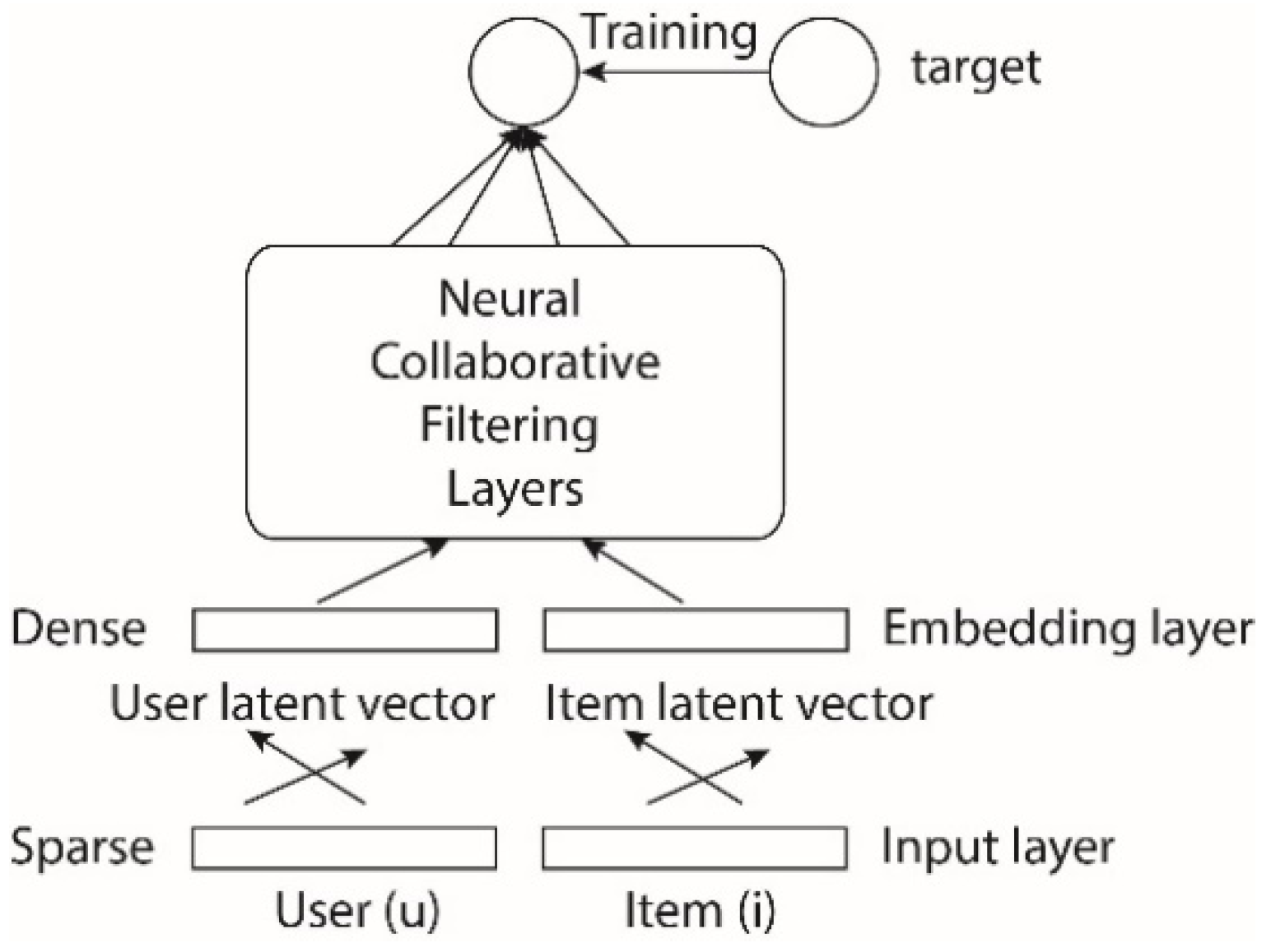

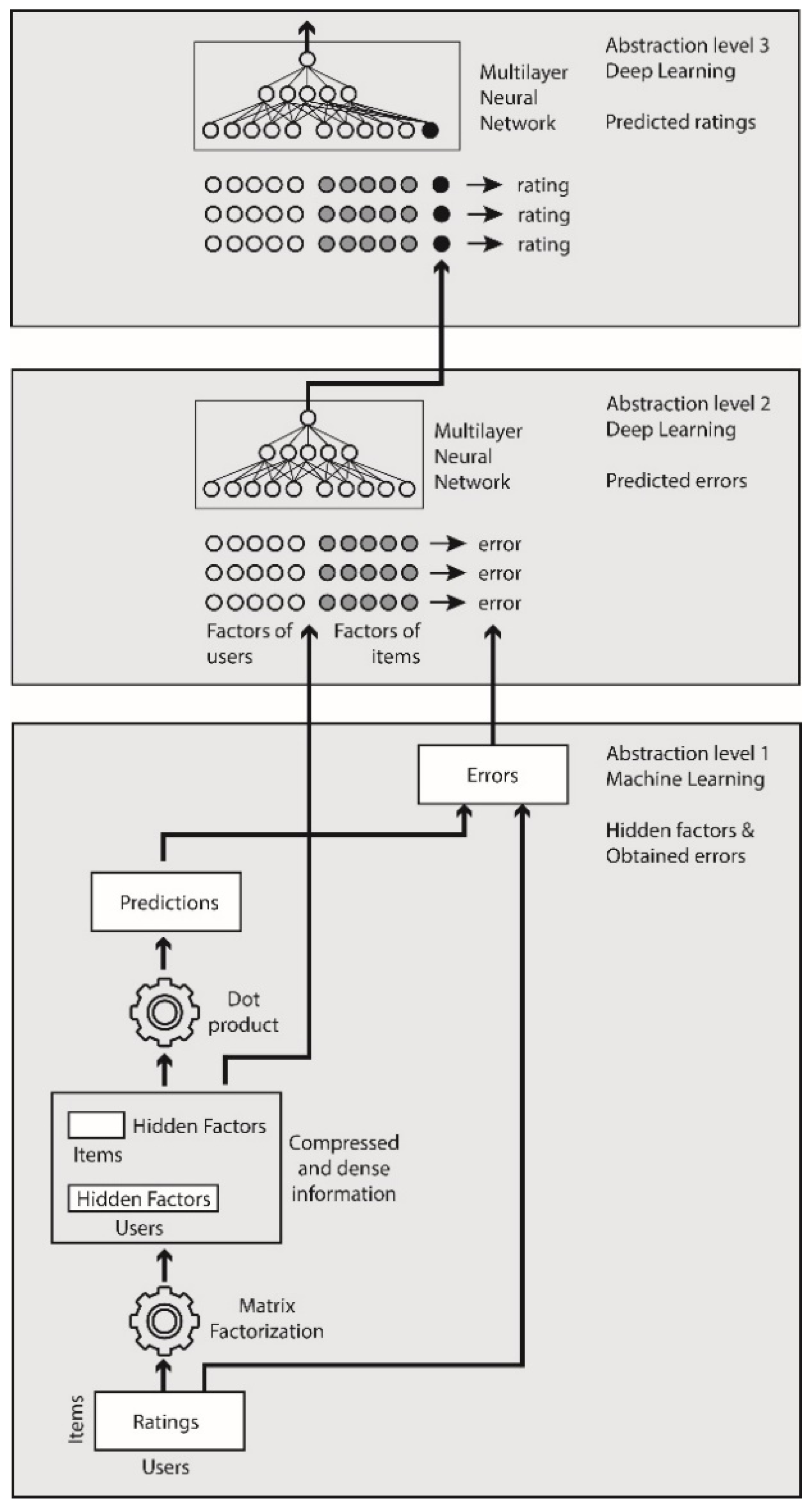
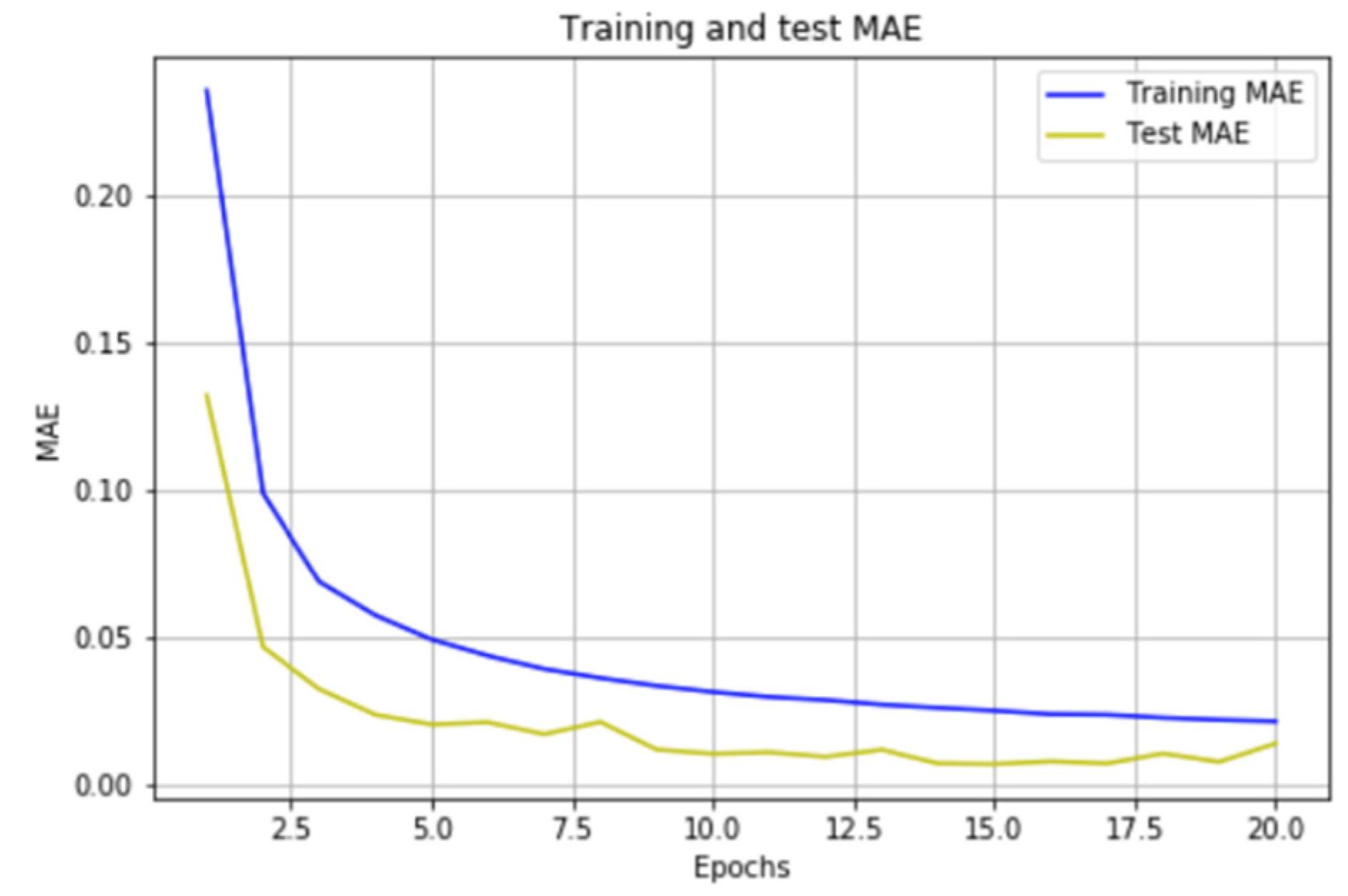
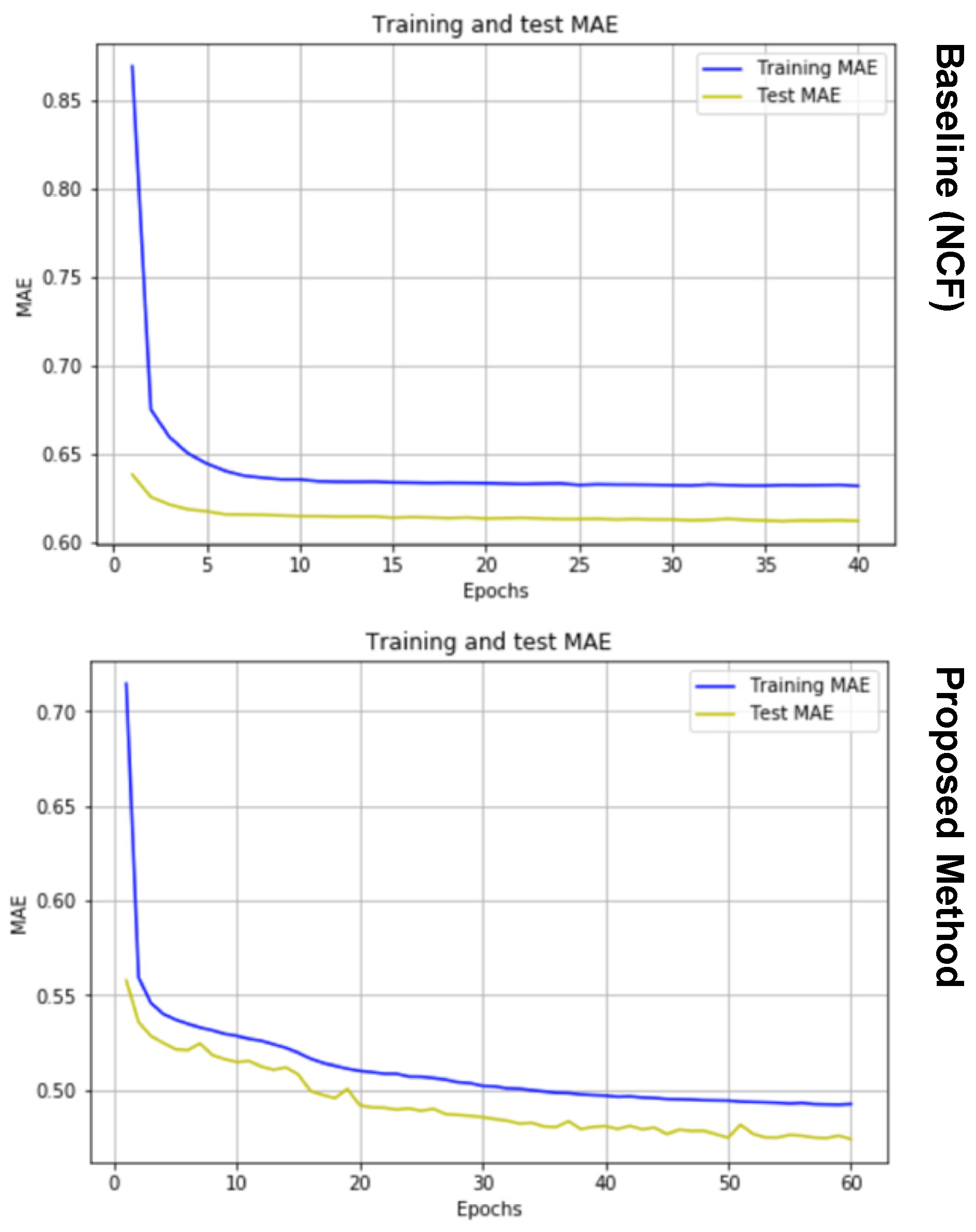
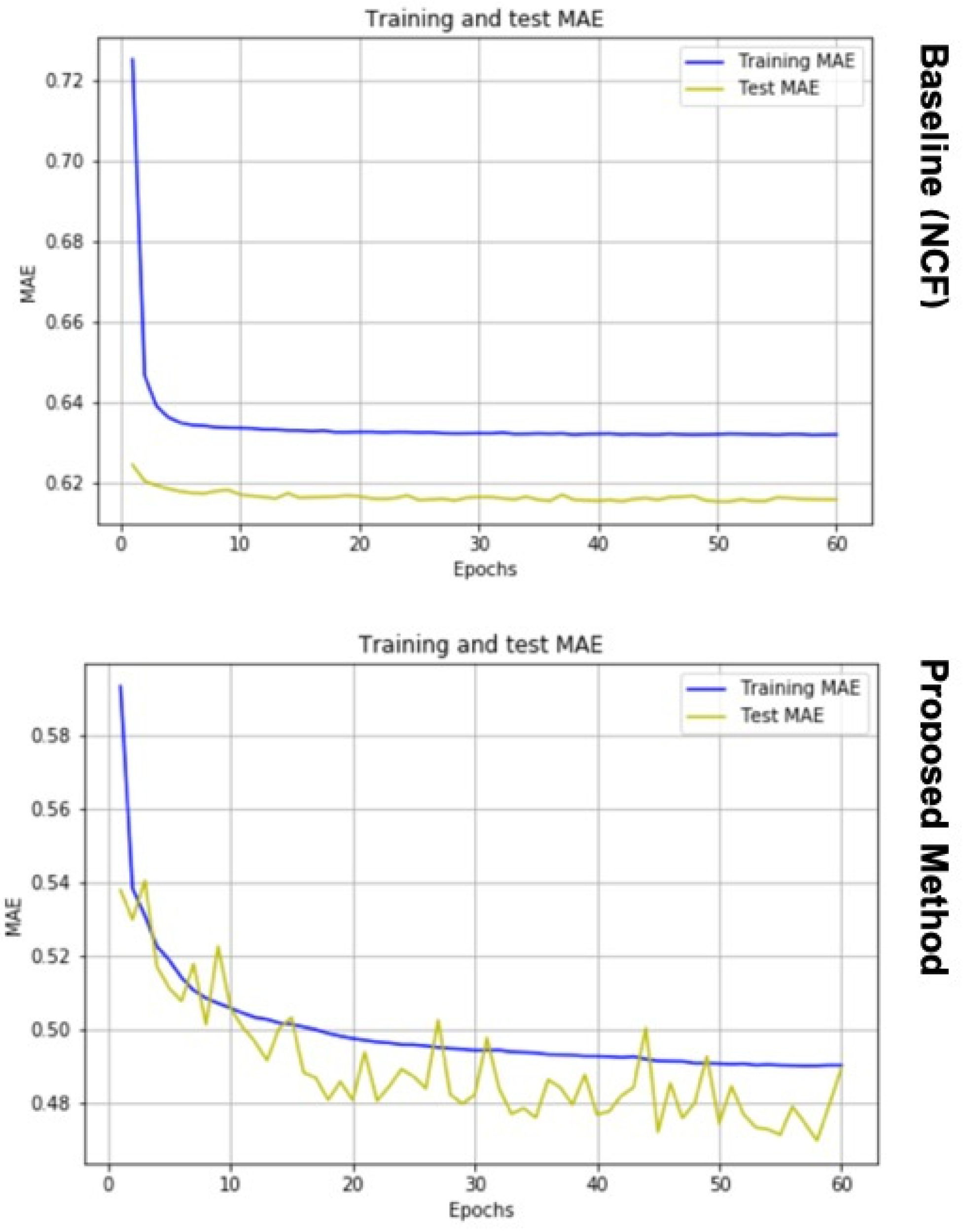

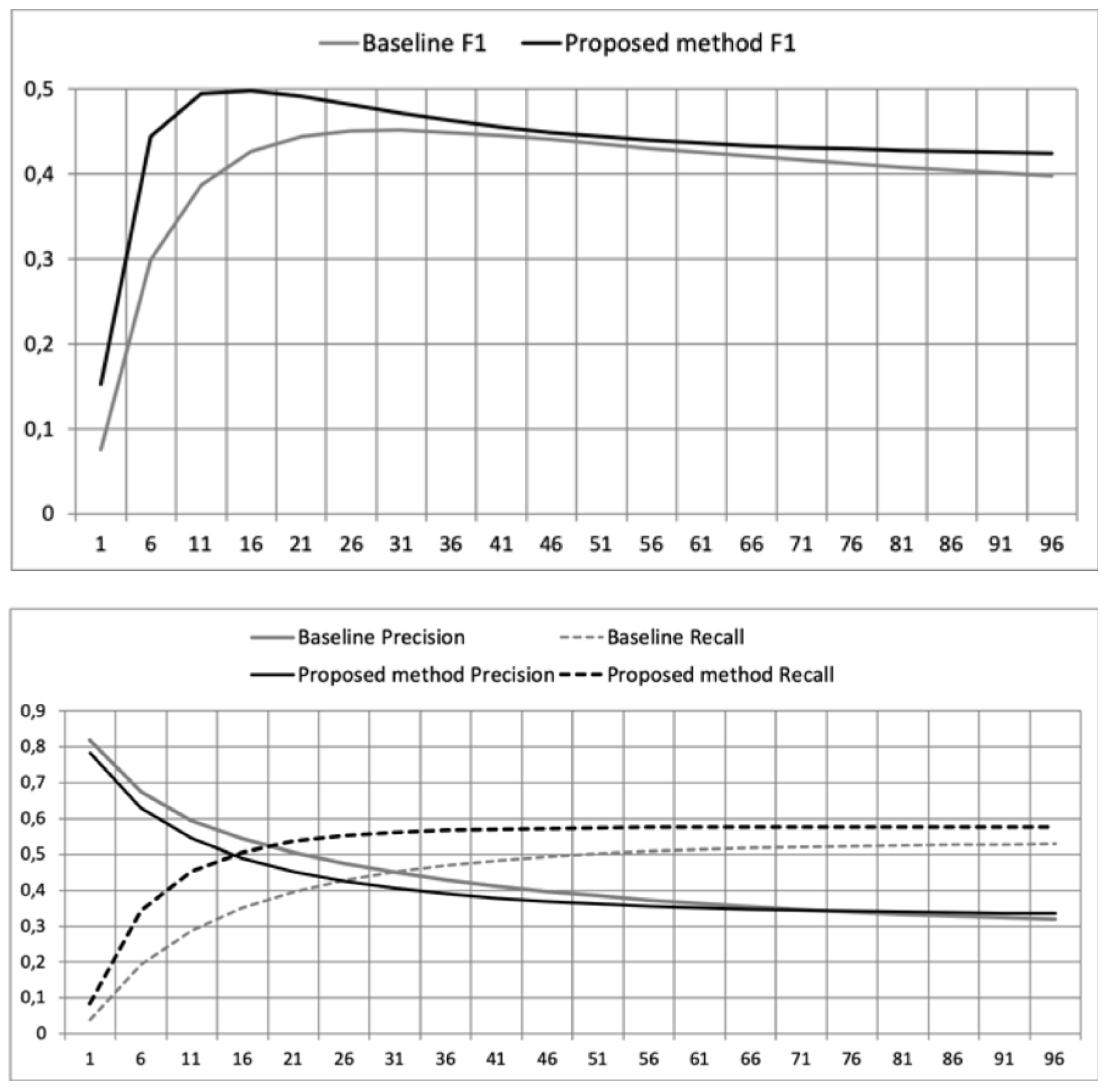
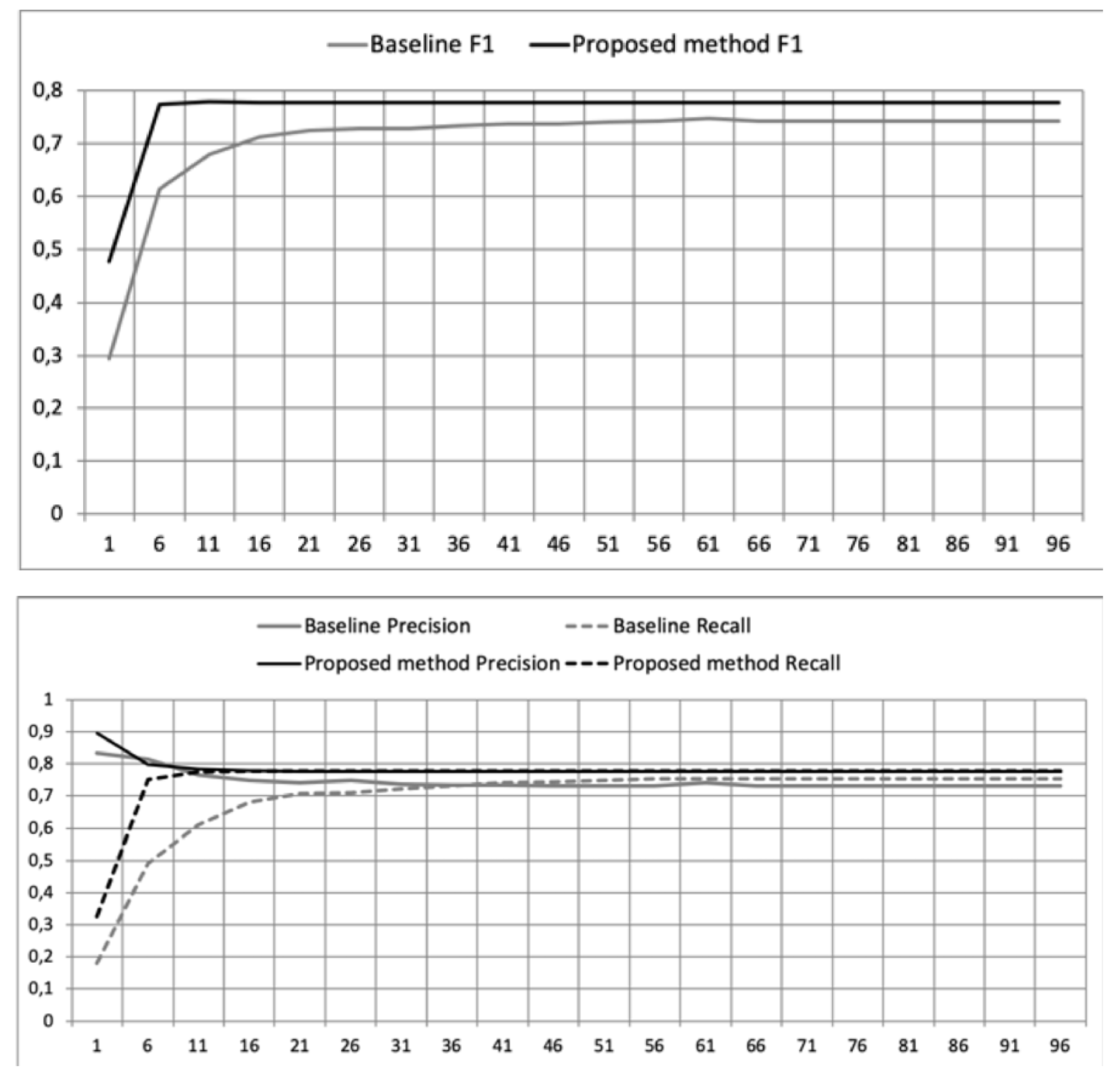
| Dataset | #Ratings | #Items | #Users | Ratings Values |
|---|---|---|---|---|
| Netflix* (subset) | 4,553,208 | 7000 | 10,000 | 1 to 5 |
| MovieLens | 1,000,209 | 3706 | 6040 | 1 to 5 |
| FilmTrust | 33,470 | 2509 | 1227 | 0.5 to 4 step 0.5 |
| Parameter | Value |
|---|---|
| % training | 80 |
| % testing | 20 |
| N factors | {1, …, 96} step 5 |
| Recommendation threshold () | 4 |
© 2020 by the authors. Licensee MDPI, Basel, Switzerland. This article is an open access article distributed under the terms and conditions of the Creative Commons Attribution (CC BY) license (http://creativecommons.org/licenses/by/4.0/).
Share and Cite
Bobadilla, J.; Alonso, S.; Hernando, A. Deep Learning Architecture for Collaborative Filtering Recommender Systems. Appl. Sci. 2020, 10, 2441. https://doi.org/10.3390/app10072441
Bobadilla J, Alonso S, Hernando A. Deep Learning Architecture for Collaborative Filtering Recommender Systems. Applied Sciences. 2020; 10(7):2441. https://doi.org/10.3390/app10072441
Chicago/Turabian StyleBobadilla, Jesus, Santiago Alonso, and Antonio Hernando. 2020. "Deep Learning Architecture for Collaborative Filtering Recommender Systems" Applied Sciences 10, no. 7: 2441. https://doi.org/10.3390/app10072441
APA StyleBobadilla, J., Alonso, S., & Hernando, A. (2020). Deep Learning Architecture for Collaborative Filtering Recommender Systems. Applied Sciences, 10(7), 2441. https://doi.org/10.3390/app10072441






